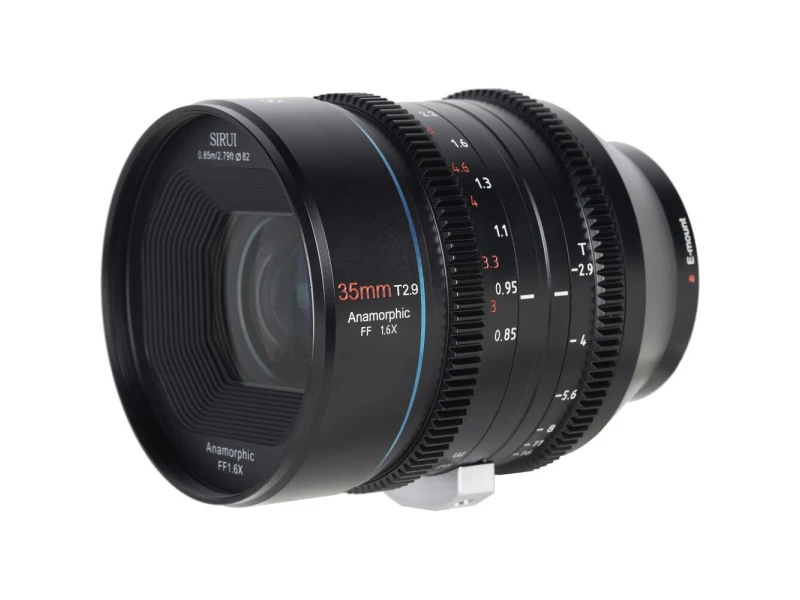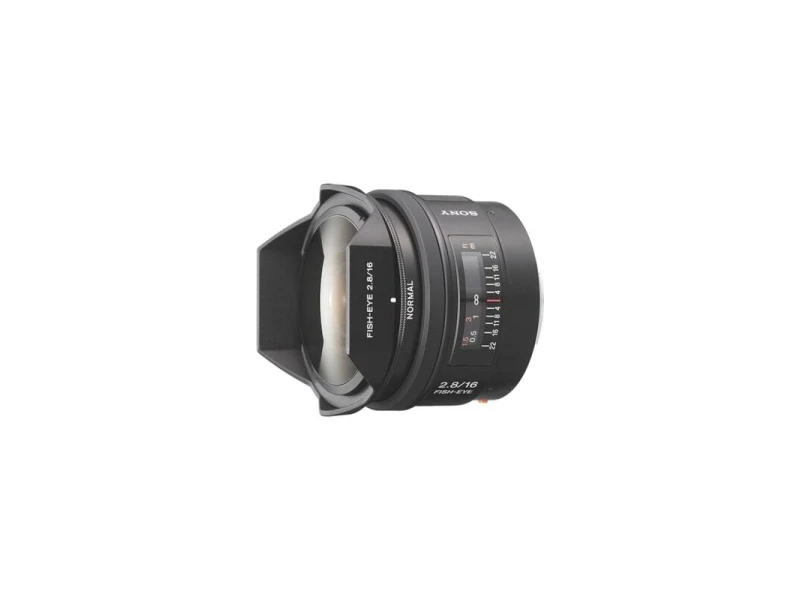Sirui 35mm T2.9 1.6x (Sony E) vs Sony 16mm F2.8 Fisheye
Sirui 35mm T2.9 1.6x (Sony E) vs Sony 16mm F2.8 Fisheye
When comparing Sony 16mm F2.8 Fisheye and Sirui 35mm T2.9 1.6x (Sony E), which one is better?
1. Lens Mount Comparison
These two lenses use the same lens mount, the Sony E. This means that both lenses are compatible with cameras that use this mount.
Winner: Tied
Regarding lens mount: Popular lens mounts are Canon RF and EF, Micro Four Thirds and Nikon Z. Different lens mounts lets you connect different lenses to camera bodies, but some might not be compatible. This can be helped by using an adapter, like a Canon EF to RF adapter.
2. Largest Aperture Comparison
The Sony 16mm F2.8 Fisheye has the largest aperture of the two lenses at 2.8 compared to the 2.9 aperture of Sirui 35mm T2.9 1.6x - (Sony E). This means that you get more light to your sensor using Sony 16mm F2.8 Fisheye wide open, and therefore it might be a better lens in dark situations.
Winner: Sony 16mm F2.8 Fisheye
Regarding largest aperture: A lower aperture number means that the widest aperture on the lens is larger. This means that more light will hit the sensor and also that the depth of field will be shallower, better separating your subject from the background.
3. Anamorphic Comparison
Winner: Sirui 35mm T2.9 1.6x (Sony E)
Regarding anamorphic: Anamorphic lenses are usually used on cinema cameras and squeezes the image when its recorded, which gives the final, stretched out, image oval bokeh and a different angle of view. The most common lenses, however, are not anamorphic but spherical, which gives a spherical bokeh and is a much cheaper lens design.
4. Lens Type Comparison
Both lenses are Prime lenses, which means that you can choose both Sirui 35mm T2.9 1.6x - (Sony E) or Sony 16mm F2.8 Fisheye if you're looking for that type of lens.
Winner: Tied
Regarding type: There are two types of lenses; zoom lenses and prime lenses. Prime lenses have a fixed focal length and cannot be zoomed, while zoom lenses have a focal length range and can be zoomed in to get closer to the subject. Prime lenses are usually lighter, cheaper and let in more light. Zoom lenses are more versatile but are more expensive since they require a more advanced lens design.
5. Stabilization Comparison
Neither Sirui 35mm T2.9 1.6x - (Sony E) or Sony 16mm F2.8 Fisheye feature built-in image stabilization.
Winner: Tied — Neither have this feature
Regarding image stabilization: When a lens features built-in stabilization, it will actively help you hold the image steady by adjusting the optical elements inside the lens to compensate for movements. Do remember that lens stabilization is not required, but it may be suitable depending on your specific needs.
6. Autofocus Comparison
In regards to autofocus, the winner is Sony 16mm F2.8 Fisheye since the other lens in this comparison, the Sirui 35mm T2.9 1.6x - (Sony E) does not have autofocus at all — it is a manual focus lens.
Winner: Sony 16mm F2.8 Fisheye
Regarding autofocus: Lenses with autofocus help you focus when shooting pictures or video. If a lens only has manual focus it means that you have to focus manually by adjusting the focus wheel on the lens. Most cinema lenses do not use autofocus and are manual focus only.
7. Macro Comparison
Neither Sirui 35mm T2.9 1.6x - (Sony E) or Sony 16mm F2.8 Fisheye are macro lenses.
Winner: Tied — Neither have this feature
Regarding macro: Macro lenses can focus much closer to your subjects and might be suitable when photographing flowers, insects, wildlife and nature.
8. Weather Seal Comparison
Sony 16mm F2.8 Fisheye features a weather sealed design while Sirui 35mm T2.9 1.6x - (Sony E) does not. This means that Sony 16mm F2.8 Fisheye is a much better choice if you know that you'll use the lens in harsh environments, where moist, rain or dust is present.
Winner: Sony 16mm F2.8 Fisheye
Regarding weather seal: A lens that is weather sealed will perform better over time if you're using the lens in harsh conditions where it's wet or dusty. It may not matter if you're merely using your lens in a studio or in your home.
9. Full Frame Comparison
Both Sony 16mm F2.8 Fisheye and Sirui 35mm T2.9 1.6x - (Sony E) cover a full frame sensor and can be used on full frame cameras as well as cameras with smaller sensors.
Winner: Tied — both have this feature
Regarding full frame coverage: All lenses do not cover full frame sensors, but not all cameras are full frame cameras either. If a lens covers a full frame sensor it can be used on all cameras with a matching lens mount, both full frame and crop sensors, except for medium format cameras.
Specifications
Full specifications table of Sirui 35mm T2.9 1.6x (Sony E) and Sony 16mm F2.8 Fisheye:
| Sirui 35mm T2.9 1.6x - (Sony E) | Sony 16mm F2.8 Fisheye | |
 |  | |
| Brand | Sirui | Sony |
| Weight | Missing | 400 g |
| Lens Mount | Sony E | Sony E |
| Focal Length | 35 mm | 16 mm |
| Largest Aperture | 2.9 | 2.8 |
| Anamorphic | Yes | No |
| Anamorphic Squeeze Factor | 1.6 | Missing |
| Minimum Focus Distance | Missing | 20 cm |
| Type | Prime | Prime |
| Aperture Range | 2.9 - 16 | 2.8 - 22 |
| Aperture Blades | Missing | 7 |
| Image Stabilization | No | No |
| Autofocus | Hayır | Evet |
| Macro | No | No |
| Weather Seal | No | Yes |
| Full Frame Coverage | Yes | Yes |
| Lens Hood Included | Missing | Yes |
